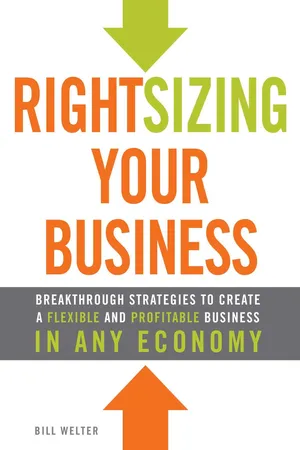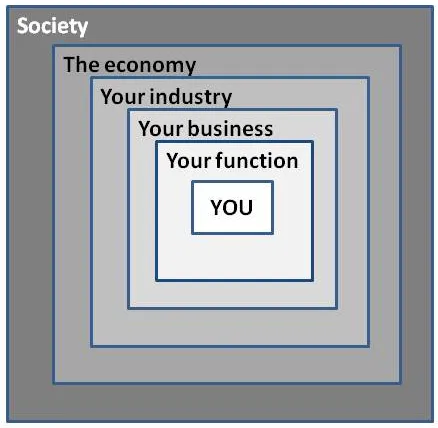
Rightsizing Your Business
Breakthrough Strategies to Create a Flexible and Profitable Business in Any Economy
- 100 pages
- English
- ePUB (mobile friendly)
- Available on iOS & Android
Rightsizing Your Business
Breakthrough Strategies to Create a Flexible and Profitable Business in Any Economy
About This Book
Ever since the recession hit, "downsizing" has been the corporate mantra. Cut overhead, increase profitability, and the future will take care of itself. Most pundits agree that this is a shortsighted approach, especially in a volatile economy. While cutting overhead increases quarterly profit in the short term, it weakens an organization for the longterm. As result, "rightsizing" has become the new tool remain profitable and competitive. It forces the organization to reevaluate its goals, its market position both past and present, and where it wants to be in the future. This results in constructive measures that underscore the strengths of the organization to meet its goals for the future. Rightsizing Your Business, written by noted management expert, Bill Welter, is the first book either in e-format or print that clearly and concisely explains this important shift in management strategy and shows any business to proceed with effective rightsizing.
Frequently asked questions
Information
Chapter 1
The Secret of Success
The Structure of Success: Simple, But Hard
- Define goals that, when achieved, will result in profit.
- Prepare plans to achieve the goals.
- Make sure you have the capabilities needed to execute the plans.
- Make sure you have enough of each of the needed capabilities.

- Goals: Do you know how realistic your goals are in light of the customers you have (and, more important, need)? Were Kodak’s goals for its film business realistic in the early part of the twenty-first century?
- Plans: Do you have specific plans for the societal and industry changes that will determine the future of your business? Were magazines and newspapers really planning for a digital future?
- Capabilities: Do you have the knowledge, skills, and other resources needed for the future of your business? What don’t you have that you should? Does Microsoft have the capabilities it needs to compete with Google?
- Capacity: What shortages will impact you? Where do you have “excess” resources? What will happen to RR Donnelley’s printing plants when the Yellow Pages disappears?
The Context for Success

A Process to Guide Your Thinking

The SRC Foundation
- Vision: This is important when it comes to rightsizing your business! What size do you envision for your business? Is bigger better? Is smaller better? Is survival the issue? Is controlled growth what you want? What is the vision you hold for your business? Discuss it and come to agreement as best you can.
- Values: This is a bit tricky because many of us want to think that we are “good guys” and will do what’s right for the business. However, if you value profit above all else you will inevitably run an anorexic organization because all of your efforts will focus on cost reduction.
- Goals: Let’s make this simple. You’re reading this book because you want an organization that is the right size.
The Sense-Response Cycle
- Sense: Look for changes in your competitive landscape and in the bigger boxes of society, economy, and industry.
- What are customers expecting that’s new to you? For example, do you use social media as part of your customer interaction?
- What products and services are emerging that have the potential to make obsolete some or all of your offerings? For example, statins “replaced” much of the need for open-heart surgery, and many hospitals found themselves with excess cardiac care space.
- Make Sense: How wil...
Table of contents
- Cover
- Title Page
- Dedication
- Acknowledgments
- Contents
- Introduction
- Chapter 1. The Secret of Success
- Chapter 2. Nine Factors That Define Your Capabilities
- Chapter 3. Target Markets
- Chapter 4. Products and Services
- Chapter 5. Organization and Staffing
- Chapter 6. Resources Employed
- Chapter 7. Locations
- Chapter 8. Infrastructure Technology
- Chapter 9. Policies and Procedures
- Chapter 10. Metrics
- Chapter 11. Partners
- Chapter 12. Putting It All Together
- Resource List
- Also Available
- Copyright Page